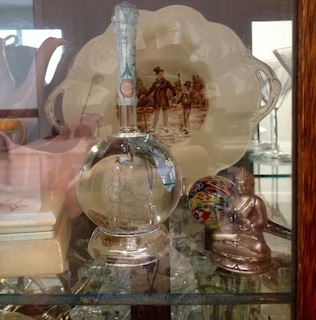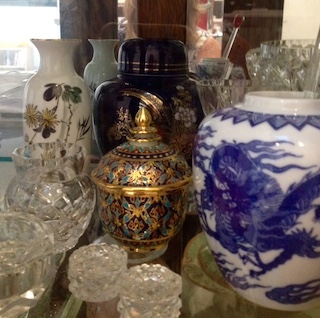Combine books, libraries, design, art, and architecture and you have a recipe to feed me well.
This week I attended a conference at the State Library of Victoria in Melbourne – Libraries as Catalysts for Placemaking.
As a Librarian and Industrial Designer, this experience was a real treat for me. Listening to people talk about, and show pictures of, current library design projects is my idea of a great day. It ignites my desires to design. Sigh!
In a past blog post I recalled how as a five year old entering the domed reading room on the State Library of Victoria inspired my desire to be an architect (and ironically, not a Librarian).
So let me tell you a little about the conference. First to present was Ethan Kent from Project for Public Spaces in New York He spoke very fast and still had to fly through half of his slides because of time constraints. He could have filled the whole day’s agenda with his relevant and interesting content. He said that libraries are important “community anchors”. He spoke of the Power of Ten, meaning ten things to do in a place. He pointed us to his website for more information on these ideas and concepts that he didn’t have time to explain more fully.
Next to present was Dan Hill, Senior Consultant from Arup. He spoke about new cultural spaces and how technology can enhance our use of public spaces from a visual and a practical perspective. His ideas included screening text onto the outside of buildings as light displays that represent the immediate and changing measurement of what is happening in a digital sense. For example, light displays as a word cloud of the names of the countries that the URL’s being accessed from the internet devices in the area that are accessing the wifi service in operation. Hmmmm. He also showed us The Cloud, project in London that is not going to be built apparently.
Several public Librarians from Victoria spoke about their experiences in recent library designs. Suzanne Gately spoke about the new Altona North Community Library. Roslyn Cousins talked about the new Colac Community Library and Learning Centre that incorporates the Colac Secondary School. Genimaree Panozzo from Moreland City Library spoke about the recent librarian’s tour of the District of Columbia Library Building Project. Sally Jones of Moonee Valley Library spoke about her trip to the USA looking at how libraries devote spaces to teenagers.
Cecilia Kugler of CK Design International spoke specifically about interior design and fit outs of public libraries and in particular the makeover of Randwick Library in NSW. Peter Moeck of the Brown Falconer Group presented his report about the new Mount Gambier Library in South Australia.
One factor that is continually repeated is the importance of using community art projects in libraries as means to effective “placemaking”. Our library service has a fantastic community art exhibition program that continues due to the continual hard work of people behind the scenes. It is already in place, valued, and effective.
After these presentations I sorted through my thoughts and impressions and began to think about the library designs that I have seen and experienced. What is it about the Mount Gambier Library that I like so much? What works and why? Because in my view it stands apart from the other library redesigns I saw presented and that I have experienced firsthand. And what makes the Mornington Library design so poor?
I recall the poor design of the brand new Mornington Library where I worked as a Librarian for many years. It was state-of-the-art, looked great, applauded, etc, etc. The colour scheme, inspired by local seaside colours of lime green, warm tones of grey/brown, looks great, the shelving and fixtures are nice and well positioned. It is an attractive and comfortable place to visit as a customer. But it was not a practical space to work in at all.
I heard the architect describe how she arrived at the inspiration for placing the first line for the plan of the building and it was by transcribing the line of the perceived route of the ship of Matthew Flinders as he explored the waters off Mornington all those years ago. This gave her a starting point that was not a straight line and forms the profile of the front elevation for the building. To my practical mind this sounded irrelevant and whimsical and even negligent. I much prefer the process being used now that begins with the people and how they want to use the place/space. This was totally ignored I think in this instance and the impractical result reflects this.
The interior of the space has placed the robust and busy children’s area next to the busy information service desk and telephones and the internet access computers. The cute colourful round padded cushions on the curved seating/shelving are perfect stepping stones for toddlers who precariously negotiate with toddler hops at chair height from the floor. The space is poorly thought out. In the afternoons the sun streams in through the immovable louvered windows straight into the eyes of the library staff who squint to see their computer screens and the faces of the customers before them. The spacious open entry forms a wind tunnel that allows cold air in winter and warm air in summer to stream through onto staff at the main service desk. The groovy cafe tendered to a local restaurant is only open for short hours that suit them and not the library customers. The staff work areas are small and don’t allow for storage, expansion or sensible work flows.
I was fortunate to visit the Mount Gambier Library last year before it opened in December and I was immediately impressed. I had seen the old Mount Gambier Library in the small dungeon of the Council offices and this new building was a huge improvement in every way. It is a lovely space to enter and be in. The central area is rectangular with high ceilings that give the feeling of being in a cathedral and light fills the space from above.
It is an intelligent design that treats its customers as intelligent. There is no “dumbing-down” in terms of signage or attitude. The minimal use of primary colours serves a practical purpose in terms of signage for easy identification of collections and zones. Overall the colours used are rich with extensive use of natural timbers and a warm patterned carpet. All the desks, shelving, display units, are custom designed and built with warm timber. This colour scheme gives the interior a feeling of tradition and permanence that many new libraries seem to be moving away from.
The children’s area is a separate area and uniquely fitted out as an underwater cave. It is surely a real drawcard for children and practical for library staff, children’s programs, and the consideration of other library users. The cafe is generous and well used. The work room also is generous with all of the latest technology implemented to make the library work the best possible, so fully-implemented RFID with a “smart” returns chute, that only opens to allow item returns by customers. Extensive use of local artists added much to the building for signage, identification, and decoration. Peter Moeck is justifiably proud of this project.
With lots to think about, I return to my little country library intent on bringing whatever small changes we can accommodate in order to make some improvements and expand our library services and facilities to be a place that continues to surprise and delight our community.






